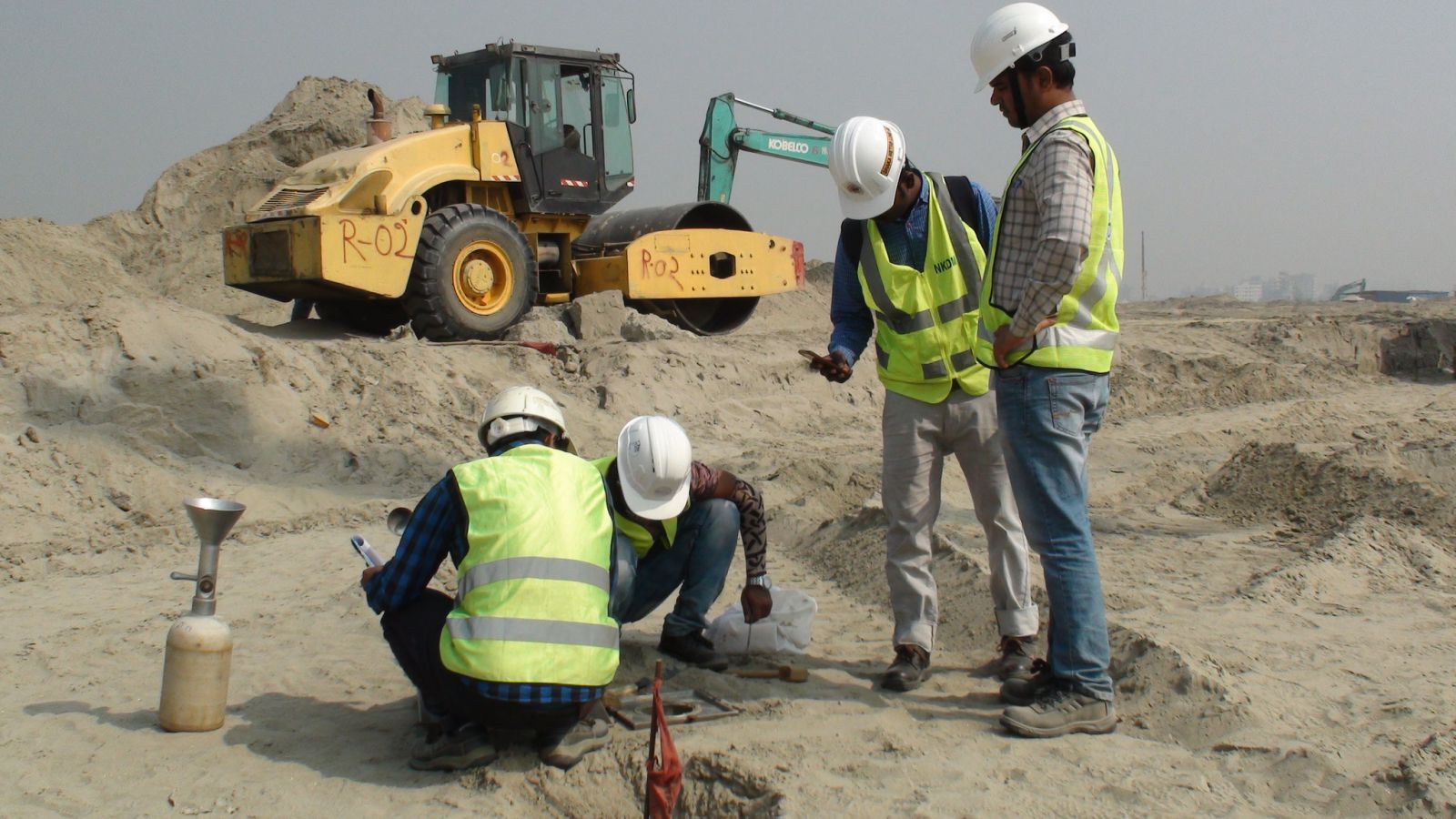The Interdisciplinary Approaches in the Geotechnical Market: Linking the Space Between Engineering, Geology, and Environmental Scientific Research for Ideal Project Results
The assimilation of design, geology, and ecological scientific research within the geotechnical industry is not just useful; it is important for achieving optimal task end results. What approaches might emerge to promote this important collaboration and enhance the efficiency of geotechnical methods?
Significance of Interdisciplinary Partnership
The importance of interdisciplinary partnership in the geotechnical market can not be overemphasized. Effective geotechnical tasks need the integration of diverse expertise from numerous areas, consisting of engineering, geology, and ecological science. This partnership makes sure that all elements of a job are thought about, leading to thorough solutions that attend to complicated obstacles.
Interdisciplinary collaboration cultivates advancement by making it possible for specialists to share understandings and methodologies that may not be noticeable when functioning in seclusion (geotechnical engineers). By leveraging the toughness of multiple techniques, groups can identify potential dangers, optimize style procedures, and boost the sustainability of geotechnical tasks. Furthermore, such partnership promotes a holistic understanding of site-specific problems, which is critical for accurate analysis and decision-making.
The complexity of geotechnical projects demands a worked with strategy to analytic. When designers, geologists, and ecological scientists function together, they can produce a cohesive technique that lines up technical demands with environmental considerations and regulative conformity. This harmony not just boosts task outcomes however also adds to the lasting strength of facilities. Eventually, interdisciplinary cooperation is vital for progressing finest practices and attaining quality in the geotechnical sector.
Key Functions of Each Technique
Collaboration amongst different disciplines is not simply beneficial; it is crucial for the effective execution of geotechnical projects. Each self-control-- design, geology, and ecological scientific research-- plays an unique yet interconnected role that contributes to forecast effectiveness and sustainability.
Geotechnical designers are largely responsible for designing structures and ensuring architectural honesty. They assess dirt and rock residential or commercial properties to analyze load-bearing abilities, offering important data for safe building and construction techniques. Their expertise allows the formulation of ingenious options to complicated challenges.

Ecological scientists evaluate the possible influences of construction on ecosystems and water resources. They perform ecological evaluations and create reduction methods to minimize unfavorable impacts. By incorporating ecological factors to consider, they guarantee conformity with regulations and advertise sustainability throughout the job lifecycle.
Situation Researches of Successful Combination
Effective assimilation of geotechnical techniques can be exemplified via numerous situation research studies that highlight the efficiency of synergy in dealing with intricate design challenges. One notable instance is the construction of the Hong Kong-- Zhuhai-- Macau Bridge, where a collaborative strategy including geotechnical design, geology, and environmental scientific research was critical. Engineers and geologists worked in unison to assess the seabed problems and optimize the foundation design, making sure security and decreasing environmental influence.
An additional impactful situation is the improvement of incline stability in the San Francisco Bay Area, where an interdisciplinary team integrated geotechnical evaluation with ecological assessments. By integrating geological studies and hydrological researches, the group effectively identified potential landslide threats and implemented effective mitigation measures, improving safety and sustainability.
Furthermore, the redevelopment of Brownfield websites typically requires a multidisciplinary approach. In one instance in Chicago, collaboration among geotechnical designers, ecological researchers, and urban coordinators resulted in the effective remediation of polluted dirt, enabling for the risk-free improvement of the website right into a neighborhood park. These instance studies show that interdisciplinary partnership not just addresses technical obstacles however additionally fosters innovative options that benefit both areas and jobs.
Challenges in Multidisciplinary Projects

In addition, coordinating routines and operations among different teams can be problematic, especially when each self-control has unique job turning points and deliverables. This misalignment can result in hold-ups and increased costs. The challenge of source appropriation likewise looms huge; making sure that specialized knowledge is available at vital junctures calls for careful planning websites and foresight.
Last but not least, governing compliance positions an additional significant challenge. Each discipline may face various regulative structures, and lining up these needs to fulfill task purposes can be lengthy and complex. Attending to these obstacles demands strong management and effective interaction methods to promote collaboration and make certain that multidisciplinary teams function cohesively towards shared goals.
Future Trends in Geotechnical Practices
As the geotechnical market progresses, emerging patterns are improving practices to resolve the difficulties encountered in multidisciplinary tasks - geo tech engineer. One considerable fad is the increased integration of innovative technologies, such as man-made intelligence and artificial intelligence, into geotechnical evaluation and layout. These innovations improve anticipating modeling and threat evaluation, enabling designers to make more enlightened decisions throughout the task lifecycle

In addition, the adoption of digital twins and real-time surveillance systems is coming to be a lot more prevalent. These tools help with ongoing analysis of dirt problems and structural performance, enabling timely treatments when issues develop.
Final Thought
To conclude, the combination of design, geology, and environmental scientific research is important for attaining ideal end results in the geotechnical market. Interdisciplinary partnership cultivates technology, boosts problem-solving abilities, and lines up technological requirements with environmental sustainability. Successful study illustrate the advantages of this strategy, while recognizing the obstacles dealt with in multidisciplinary projects. Looking in advance, welcoming these collaborative techniques will be important for browsing future fads and advancing the field of geotechnical engineering.
The assimilation of engineering, geology, and ecological science within the geotechnical sector is not just helpful; it is imperative for achieving optimum project results. Effective geotechnical tasks need the my link integration of varied knowledge from different fields, consisting of engineering, geology, and environmental scientific research.Browsing the intricacies of multidisciplinary jobs in the geotechnical sector offers several substantial challenges.As the geotechnical market evolves, arising fads are improving practices to resolve the challenges encountered in multidisciplinary tasks. Geotechnical designers are increasingly teaming up with ecological researchers to make certain that projects straighten with sustainability goals and conform with regulative needs.
Comments on “Selecting the Right Geotechnical Engineers for Your Next Large-Scale Task”